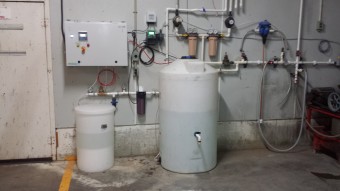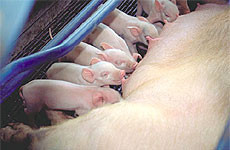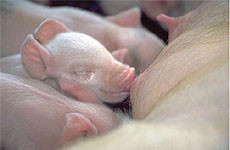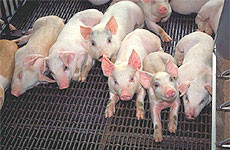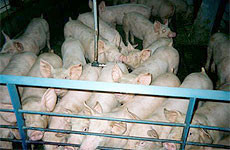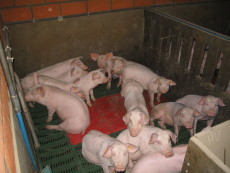Through total hygiene to increased productivity and cost saving
The use of electrochemistry in infection control in the pig industry is not new. It has been practiced in the former USSR Republics by government institutes responsible for pig farming and meat production. Only now in the west with the development of ECA devises can the same protocols be introduced. Pressures on the industry to rethink the way it manages animal welfare as well as removing the antibiotics from feed has led to a renewed interest in ECA technology. Infection control studies of the living environment for pigs indicate that adequate sanitation between and during life cycles still holds the major key to addressing the problems of recurring disease. Studies indicate that buildings can be prone to 'handing on' to disease due to a variety of sometimes unfathomable factors. Cleaning regimes and the design of buildings are the main factors whitch govern the incidence of serious reoccurrence of disease. Biocides directives from the EU put pressure on growers to eliminate the 'dirty' technologies for sanitizing living environments. | ELA-1200 generator at a pig farm in Canada |
The health and safety concerns of the pig industry workers are of course paramount and this can lead to increased downtimes, caused by following the essential mandatory safe practices. In an industry where a penny saved on a piglet has a major impact on the bottom line, procedures and protocols for eliminating disease and increasing productivity are worthy of consideration. Factors such as hygiene, quality and price are pivotal to an industry which is highly competitive and regulated by food standard bodies. Pig producers are constantly looking for ways to improve performance. Factors which govern this goal are outlined below.
Envirolyte Industries International Ltd. has the capability of taking a holistic approach to infection control in the industry from farrowing to fattening pigs.
Hygiene protocol for Complete cycle
Hygiene protocol for Farrowing cycle
Hygiene protocol for Weaner cycle
Hygiene protocol for Grower / Finisher cycle
The reported benefits of anolyte applications in Pig farming:
|
|

